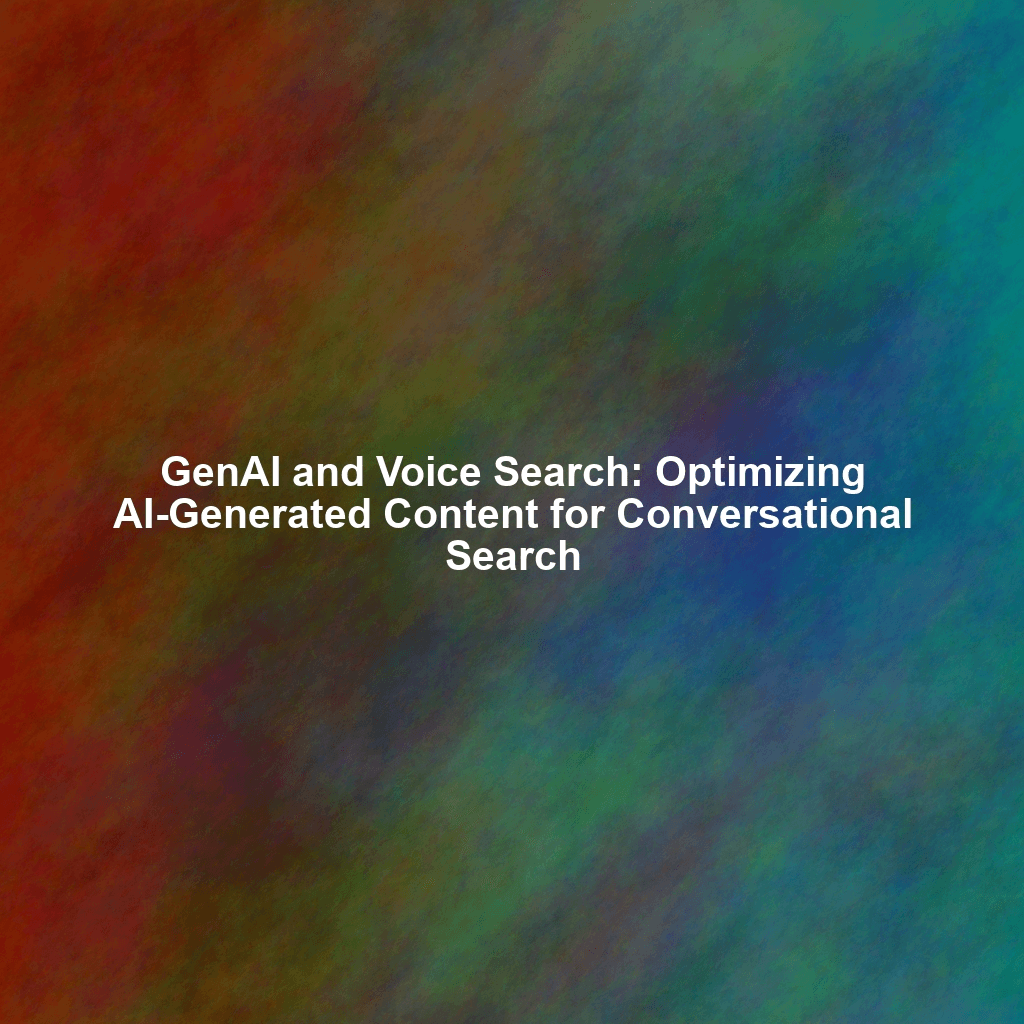Understanding Conversational Search
Voice search isn’t just about speaking instead of typing. It’s about using natural language, asking questions as if you were talking to a person. These queries are typically longer, more conversational, and intent-focused.
Key Characteristics of Voice Search Queries:
- Natural Language: Users employ everyday language, including slang and colloquialisms.
- Long-Tail Keywords: Voice searches often involve longer, more specific phrases than typed searches. For example, instead of “best Italian restaurant,” someone might ask, “What’s the best-rated Italian restaurant near me that’s open late?”
- Question Format: Voice searches are frequently framed as questions (Who, What, Where, When, Why, How).
- Local Intent: Many voice searches are geared towards finding local information, like nearby businesses or directions.
- Action-Oriented: Users are often looking to take immediate action, such as making a phone call or getting directions.
Optimizing GenAI Content for Voice Search
To ensure your GenAI-generated content resonates with voice searchers, you need to fine-tune your approach, incorporating these strategies:
Embrace Natural Language
While GenAI can generate grammatically correct sentences, it sometimes falls short on capturing the natural flow of human conversation. Carefully review and edit AI-generated text to make it sound more conversational. Use contractions, avoid overly formal language, and incorporate a friendly tone.
Target Long-Tail Keywords
Instead of relying solely on broad keywords, research and incorporate long-tail keywords that reflect common voice search queries. Use keyword research tools specifically designed for voice search to identify relevant phrases.
Answer Questions Directly
Structure your content to directly answer common questions related to your topic. Use clear and concise language, providing immediate value to the reader. Consider using a Q&A format or FAQs to address potential voice search queries directly.
Optimize for Local SEO
If your business has a physical location, ensure your content is optimized for local search. Include your business name, address, phone number (NAP) consistently across your website and online directories. Use location-specific keywords in your content.
Focus on Actionable Content
Make it easy for voice searchers to take action. Include clear calls to action (CTAs), such as “Call us now,” “Get directions,” or “Visit our website.” Ensure your website is mobile-friendly and that users can easily contact you via phone or email.
Leverage Schema Markup
Implement schema markup to help search engines understand the context of your content. Use schema markup specifically designed for FAQs, how-to guides, and local businesses.
GenAI vs. Human Content Writers: A Quality Comparison
GenAI excels at generating large volumes of content quickly, but it often struggles with nuance, creativity, and understanding complex concepts. Here’s a breakdown of how GenAI performs compared to human writers in key areas:
- Style & Tone: GenAI can mimic different writing styles, but it often lacks the personality and emotional intelligence of a human writer.
- Grammar & Accuracy: GenAI is generally strong on grammar, but it can sometimes produce factually inaccurate information. Human writers are better at verifying information and ensuring accuracy.
- SEO Optimization: GenAI can generate content optimized for specific keywords, but it may not fully understand the intricacies of SEO, such as keyword density, link building, and user experience.
- Creativity & Originality: GenAI can generate creative content, but it often relies on existing patterns and may not produce truly original ideas. Human writers are better at brainstorming, generating novel concepts, and developing unique perspectives.
- EEAT (Experience, Expertise, Authoritativeness, and Trustworthiness): This is where human writers currently have a significant advantage. Building trust requires demonstrating authority and expertise, often through personal experience and a consistent track record of providing accurate and valuable information. GenAI struggles to demonstrate these qualities without careful human oversight and fact-checking.
Therefore, the best approach is often a hybrid one: use GenAI to generate a first draft, then have a human writer review, edit, and refine the content to ensure it is accurate, engaging, and optimized for voice search. Think of GenAI as a powerful tool, not a replacement for human expertise.
The Future of Voice Search and AI Content
As AI technology continues to evolve, we can expect GenAI to become even better at understanding and responding to conversational queries. However, the human element will remain crucial. Content creators will need to focus on:
- Developing AI-assisted workflows: Finding the right balance between AI automation and human oversight.
- Focusing on originality and creativity: Leveraging human skills to create content that stands out from the crowd.
- Prioritizing user experience: Ensuring that content is not only optimized for search engines but also provides a valuable and engaging experience for users.
- Upholding EEAT principles: Establishing and maintaining trust with your audience by showcasing expertise, experience, authority and trustworthiness in every piece of content.
Conclusion
Optimizing GenAI-generated content for voice search requires a strategic approach that combines the power of AI with the human touch. By understanding the unique characteristics of conversational queries, targeting long-tail keywords, focusing on natural language, and leveraging schema markup, you can create content that resonates with voice searchers and drives results. While GenAI offers valuable tools for content creation, remember that human expertise is essential for ensuring accuracy, originality, and a positive user experience. Embracing a hybrid approach will allow you to unlock the full potential of both AI and human creativity in the age of voice search.
 Skip to content
Skip to content

